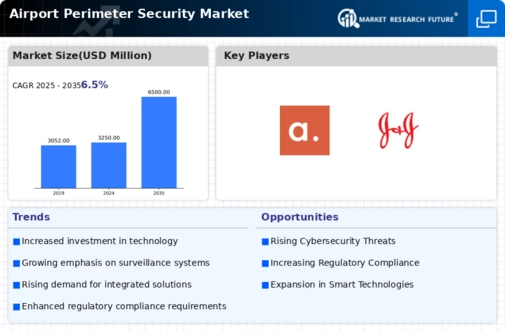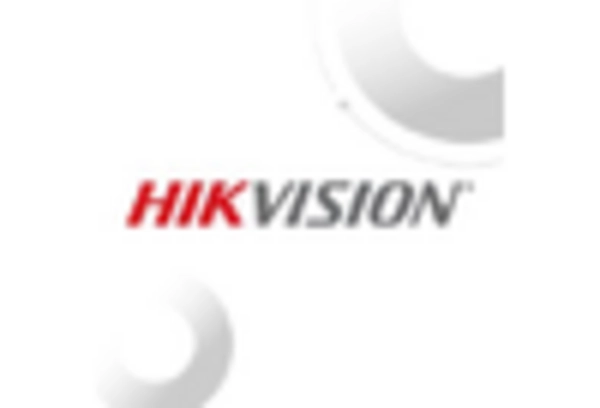The Airport Perimeter Security Market is characterized by a dynamic competitive landscape, driven by the increasing need for enhanced security measures at airports globally. Key players such as Hikvision (CN), Honeywell (US), and Thales (FR) are at the forefront, each adopting distinct strategies to solidify their market positions. Hikvision (CN) focuses on innovation through advanced video surveillance technologies, while Honeywell (US) emphasizes digital transformation and integration of IoT solutions into their security systems. Thales (FR) is strategically positioned through partnerships with governmental agencies, enhancing their credibility and operational reach. Collectively, these strategies contribute to a competitive environment that is increasingly reliant on technological advancements and strategic collaborations.
In terms of business tactics, companies are localizing manufacturing to reduce costs and optimize supply chains, which appears to be a response to the growing demand for rapid deployment of security solutions. The market structure is moderately fragmented, with several players vying for market share, yet the influence of major companies remains substantial. This competitive structure fosters innovation and encourages smaller firms to enhance their offerings to remain relevant.
In August 2025, Hikvision (CN) announced the launch of a new AI-driven perimeter security solution designed to enhance threat detection capabilities. This strategic move is significant as it aligns with the growing trend towards automation and AI integration in security systems, potentially setting a new standard for operational efficiency in airport security.
In September 2025, Honeywell (US) unveiled a partnership with a leading technology firm to develop a cloud-based security management platform. This initiative is crucial as it reflects the increasing importance of digital solutions in the security sector, allowing for real-time monitoring and data analytics, which could significantly improve response times to security threats.
In July 2025, Thales (FR) secured a contract with a major international airport to implement a comprehensive security system that integrates biometric technology. This development underscores the trend towards personalized security measures, enhancing passenger experience while ensuring safety. Such contracts not only bolster Thales's market presence but also highlight the growing demand for sophisticated security solutions in the aviation sector.
As of October 2025, current competitive trends in the Airport Perimeter Security Market are heavily influenced by digitalization, sustainability, and the integration of AI technologies. Strategic alliances are increasingly shaping the landscape, as companies recognize the value of collaboration in enhancing their technological capabilities. Looking ahead, competitive differentiation is likely to evolve from traditional price-based competition to a focus on innovation, advanced technology, and supply chain reliability, suggesting a transformative shift in how companies approach market challenges.

















Leave a Comment